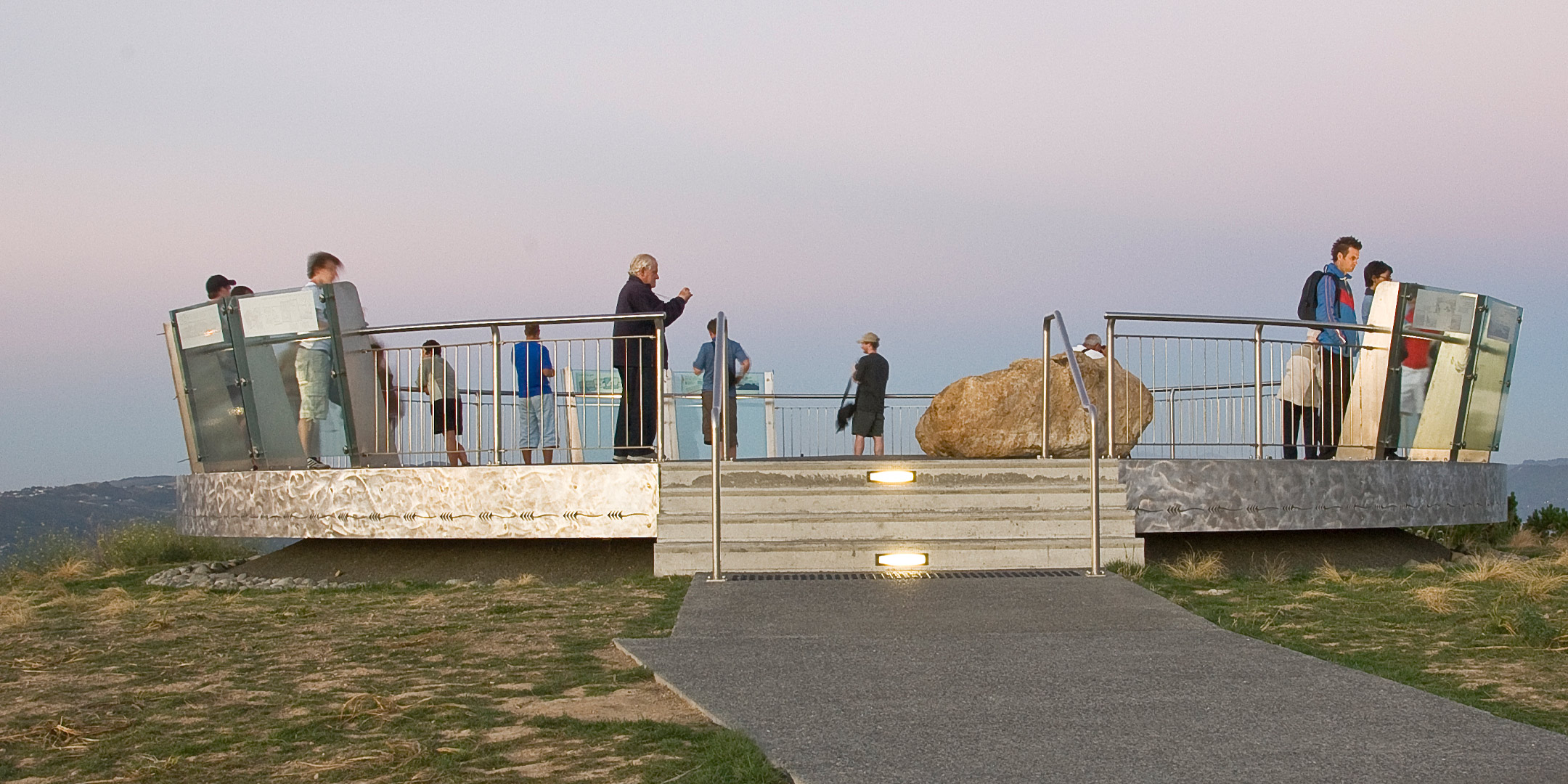From 2007 – 2016, how has Mt. Victoria changed?

Boyden Evans, the Project Lead for Mt. Victoria revisits the site and see the changes. Boffa Miskell was commissioned by Wellington City Council to redevelop the site in 2007.
“I have returned to Mt Victoria Lookout and checked out how our project was faring. It was a warm, still day and there were 50-60 people there, either at the bottom in the carpark/assembly area reading the interpretation panels, climbing the steps up to the lookout, or at the lookout itself – taking photographs, looking at the view, reading the interpretation panels, sitting on the large rock in the middle of the platform or sitting in the sun.”
The site was awarded the 2008 NZILA Bronze Award for its improvements to visitor information and enhancing the experience.
Boyden identifies the weaknesses of the area:
“The design has fared well, everything is intact, and the site and area is well maintained by WCC. There are 2 issues (and which were issues before we did the revamp):
There are generous, wide flights of steps up to the lookout and at times such as when 1-2 tourist buses arrive, when the steps can be crowded as people make their way up to the viewing platform on the summit and consequently there is a well-worn track on either side of the steps. When it rains water runs down the track and so there is a scar on both sides of the flight of steps, which doesn’t look good.
Planting was outside of our contract, WCC Parks and Reserves did this and while the planting is generally well maintained, the exposed site and the very thin topsoil has meant vegetation establishment has been relatively slow. I think it would have been wise if the planting had been tackled a bit differently to achieve a quicker and denser cover.”
“The project still looks good and it receives a very large number of visitors. The design elements such as seating, interpretation panels, and handrails all look great and everything is in a very good state and well maintained. Visitors spend a lot longer at the site than they did previously. The interpretation panels, which are located various places across the site explaining the historic, cultural and physical landscape aspects through crisp simple graphics and text capture peoples’ attention, there are opportunities for views over different parts of the city as visitors travel up and down to the summit platform, and the platform itself can accommodate a great many more people than previously.” said Boyden.


